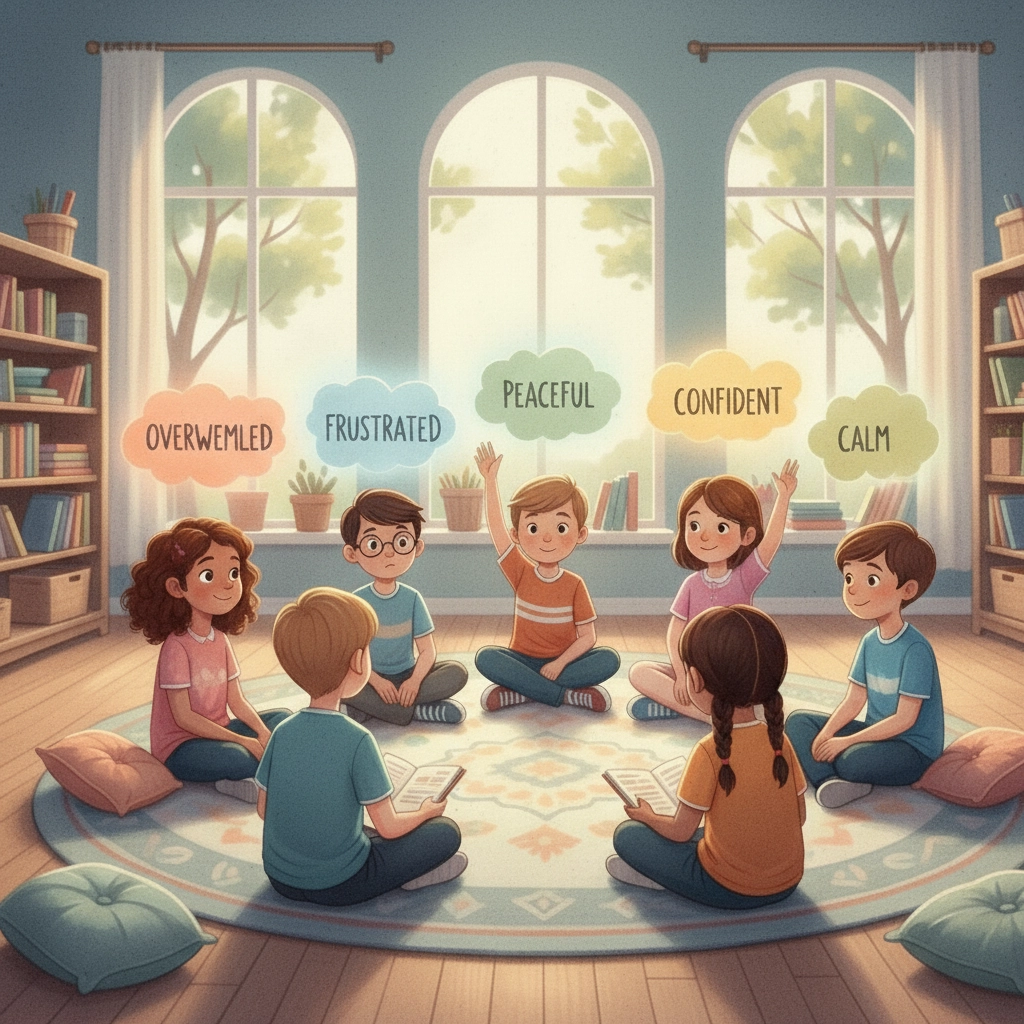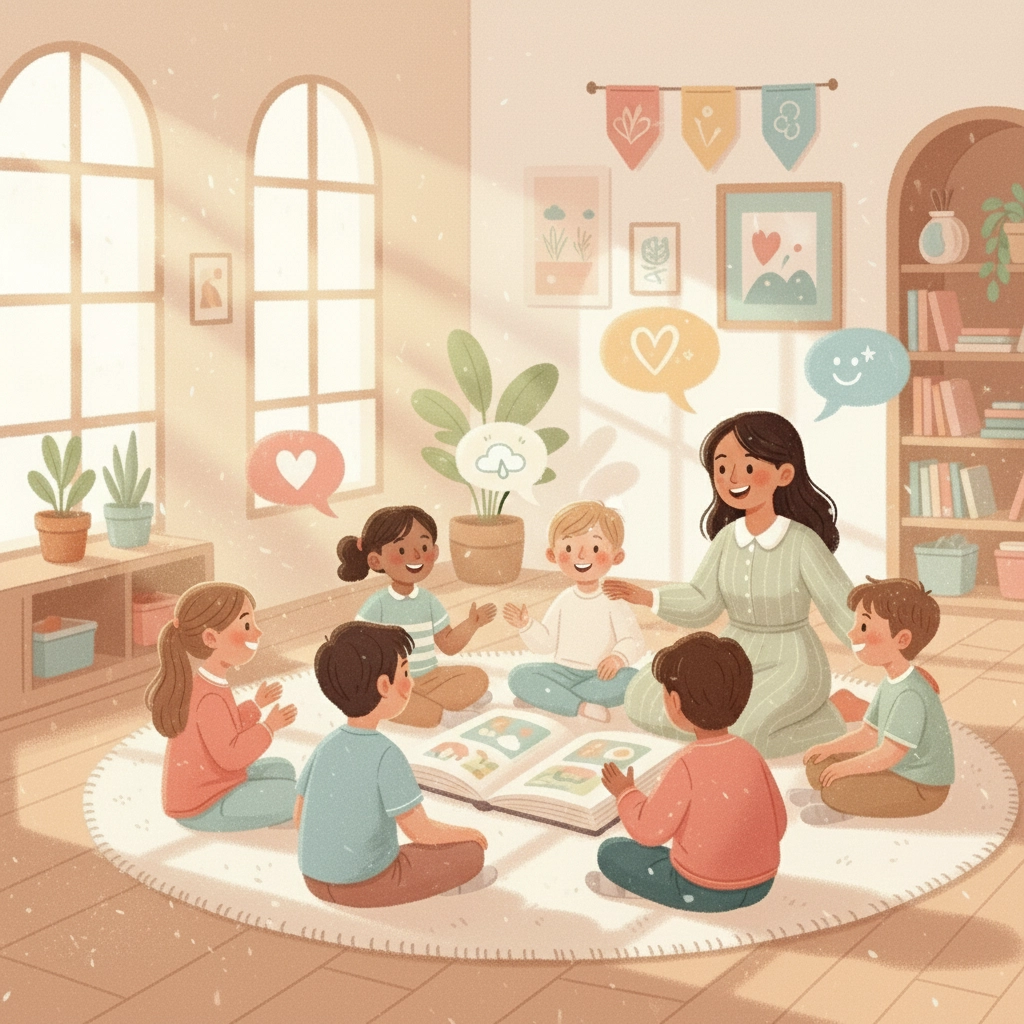Picture this: It’s Tuesday morning, and seven-year-old Maya is having a complete meltdown because her best friend chose someone else as a partner for the science project. Instead of the usual tears, shouting, or complete shutdown, Maya takes a deep breath and says, “I’m feeling really disappointed and left out right now, but I know I can handle this.”
What changed? Social emotional learning books.
If you’re an educator, parent, or work with children in any capacity, you’ve probably witnessed the transformative power of giving kids the right tools to handle their big feelings. But here’s what most people don’t realize: SEL books aren’t just nice-to-have additions to your classroom library: they’re game-changers that fundamentally reshape how students process, understand, and respond to their emotions.
Let’s dive into exactly why these books are creating such profound shifts in emotional intelligence and resilience.
The Missing Piece: Emotional Vocabulary
Here’s something that might surprise you: Most children (and let’s be honest, many adults) lack the basic vocabulary to describe their internal emotional experiences. When a student feels frustrated, overwhelmed, or anxious, they often can’t articulate what’s happening inside them: which means they can’t address it effectively.
Social emotional learning books change this completely.
These books introduce children to a rich, nuanced emotional vocabulary that goes far beyond “happy,” “sad,” “mad,” and “scared.” Students learn words like:
- Overwhelmed
- Disappointed
- Frustrated
- Anxious
- Proud
- Embarrassed
- Confident
- Peaceful
But here’s the real magic: When children can name their emotions accurately, they gain power over them. Instead of being hijacked by unnamed feelings, students can pause, identify what they’re experiencing, and choose their response. This single shift: from emotional reactivity to emotional awareness: transforms classroom dynamics and individual student success.
Think about it: How many behavioral incidents in your classroom stem from students who simply don’t know how to express what they’re feeling inside?
Learning Through Safe Exploration
One of the most powerful aspects of SEL books is that they provide a safe laboratory for emotional learning. Through characters and storylines, students can observe, analyze, and discuss emotional situations without the high stakes of their own personal experiences.
When a student reads about a character dealing with jealousy, disappointment, or fear, they’re essentially receiving a roadmap for their own emotional journey. They see:
- How the character recognizes their feelings
- What strategies the character uses to cope
- How relationships are affected by different emotional responses
- What outcomes result from various choices
This vicarious learning is incredibly powerful because it allows children to practice emotional problem-solving in a low-pressure environment. They can discuss what they might do differently, explore alternative solutions, and build their emotional toolkit: all before facing similar challenges in real life.
Building Emotional Resilience and Self-Regulation
Here’s where SEL books create lasting change: They teach students that big feelings are normal and manageable. Instead of viewing emotions as something that happens TO them, children learn that emotions are information they can work WITH.
Quality social emotional learning books demonstrate specific coping strategies:
- Mindful breathing techniques when feeling overwhelmed
- Positive self-talk during challenging moments
- Problem-solving steps for conflict resolution
- Perspective-taking skills for better relationships
- Self-advocacy strategies for getting help when needed
But here’s what makes books particularly effective: Students see these strategies modeled by characters they care about, making the techniques feel accessible and relevant rather than abstract or preachy.
Creating Classroom Communities of Support
When you integrate SEL books into your regular instruction, something beautiful happens: emotional intelligence becomes part of your classroom culture.
Read-alouds create natural opportunities for students to:
→ Share their own similar experiences
→ Discuss different emotional responses to the same situation
→ Practice empathy by considering multiple perspectives
→ Normalize conversations about feelings and mental health
→ Build connections with classmates through shared vulnerabilities
These discussions don’t just happen once: they create ongoing classroom norms where emotional awareness and support become part of daily interactions. Students learn that it’s not only okay to have big feelings, but that talking about them makes everyone stronger.
The Academic Connection You Might Not Expect
Here’s something that surprises many educators: SEL books don’t take away from academic learning: they enhance it. Research consistently shows that students with strong social-emotional skills perform better academically across all subject areas.
Why? Because emotional regulation is directly connected to:
- Focus and attention during instruction
- Persistence through challenging tasks
- Collaboration skills for group work
- Growth mindset when facing setbacks
- Stress management during assessments
When students feel emotionally grounded and supported, they have more mental and emotional resources available for learning. It’s not an either/or situation: it’s a both/and opportunity that strengthens everything else you’re trying to accomplish in your classroom.
Long-Term Impact: Skills for Life
The changes that SEL books create extend far beyond your classroom walls. The emotional intelligence and self-regulation skills students develop through these books become lifelong assets that support their mental health, relationship quality, and future success.
Consider this: The student who learns to recognize anxiety and use breathing techniques in second grade is the teenager who can manage test stress without panic attacks. The child who practices empathy through character discussions becomes the adult who builds strong, supportive relationships.
This is legacy-level learning: the kind that shapes who students become as human beings, not just what they know academically.
Making It Practical: What This Looks Like in Action
So how do you harness this transformative power? Here are some practical strategies:
Start with intention: Choose SEL books that address specific emotional challenges your students face: anxiety, friendship conflicts, family changes, or academic pressure.
Create discussion rituals: Establish regular times for emotional check-ins and book discussions that normalize talking about feelings.
Model vulnerability: Share your own emotional experiences and coping strategies to show students that everyone deals with big feelings.
Connect to real life: Help students make explicit connections between book scenarios and their own experiences.
Celebrate growth: Acknowledge when students use SEL skills in real situations: this reinforces the learning and motivates continued practice.
Your Next Steps
The evidence is clear: Social emotional learning books have the power to fundamentally change how your students handle big feelings. They provide vocabulary, strategies, safe practice opportunities, and ongoing support for emotional growth that extends far beyond childhood.
If you’re ready to make this transformation a reality in your own classroom or educational setting with a book of your own, we’d love to support your journey. At Garden Wolf Publishing, we specialize in creating SEL books that truly connect with children and provide practical tools for emotional growth.
Ready to transform how your students handle big feelings? Explore our SEL collection or get in touch to learn more about bringing this powerful learning to your classroom.
The students in your care deserve tools that will serve them for a lifetime. SEL books aren’t just stories; they’re roadmaps to emotional resilience, empathy, and authentic connection. And that changes everything.




